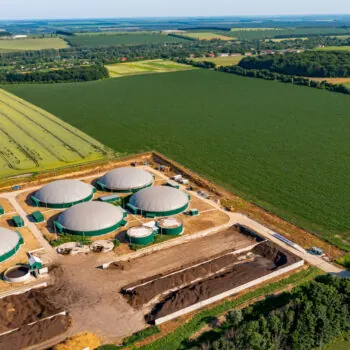Prioritising fossil fuel supply is no longer an effective way of managing energy security. In this new energy context, energy security will be determined first and foremost by the ability of countries to rapidly dial down fossil fuel demand and to avoid making growth trajectories dependent on fossil fuels. Energy security management at global or national level needs to gear up for this shift. Here is how.
Energy security is a function of supply and demand – it requires managing both together. This is not a new insight. In fact, the energy efficiency measures in response to the 1970s oil crises curbed global energy consumption. But they did not prevent the current energy crisis.
Why is that? Energy security, as understood by governments and the energy sector, was anchored in the idea of the “trilemma”. It placed energy security, sustainability and affordability as inevitable trade-offs. This has turned out to be a misleading, if not false, equation, for two reasons. First, the advent of renewables and other clean energy solutions made it possible – with the right management – to reconcile all three. Renewables, insulation, heat pumps, and digital grids are powerful, yet underutilised tools in managing down demand for fossil fuels. They can do so while providing affordable access to emissions-free energy services to households and businesses. Second, governments neglected actively managing energy security. They prioritised supply and thus ignored a vast number of options. The mandate of the International Energy Agency (IEA), the core international institution created in response to the 1970s oil crisis, centered around fossil fuel supply. Governments also did not set out how to reconcile trade-offs between the three dimensions of the trilemma. Instead, they often outsourced critical decisions to sub-sector interests, such as pipeline owners, that prioritised the supply dimension.
At the same time, the new energy world will be more complex. Energy markets will be less centralised and more digital. They have to deal with extreme climates and depend on adequate supply chains behind the heat pumps, solar panels and batteries needed. Energy security management systems need to reflect that in their size, skills, and the way they are conceptualised.
The negative consequences of reducing energy security to a question of physical infrastructure and supply have taught us valuable lessons. 100% guarantees for energy security and affordability via expanding supply are impossible. Even when including demand, extracting the final sub-percentage points of reliability will still be infeasibly expensive. So, governments must set out under which conditions energy security is not delivered and how economic and social consequences are dealt with.
Next-generation energy security management
In 2022, G7 energy ministers stated that they want to be “increasing energy security through an accelerated energy transition”. Getting a grip on energy security in the new energy world requires bodies like the IEA and national energy security management systems (which are still largely lacking) to update the scope of their work, their skills and mandate as detailed below.
Skills: increase dedicated capacity and expand skill sets (scope).
Scope: encompassing at least energy, digital, trade, climate and defense.
Mandate (with possible indicators):
- Monitor progress in managing down fossil fuel demand. Level of responsiveness of energy demand via smart meters and battery storage; fossil-fuel-intensity of supply; level of energy waste.
- Monitor whether supply chains can meet the required ramp-up of clean energy. Supply volumes and recycling rates of key materials and products; sourcing and manufacturing diversification; skilled labour availability.
- Recommend how to integrate climate change impacts into energy investment planning. Level of resilience of critical energy infrastructure and services to climate impacts; consistency of mitigation and climate impact scenarios.
- Assess cybersecurity capabilities. Existence of cybersecurity strategies; support alignment of standards to facilitate cross-border power trade.
- Recommend how to make energy security trade-offs. Mechanisms for how to balance energy security trade-offs (e.g., between re-shoring and costs); develop strategies to deal with the subsequent economic and social consequences.
- Establish mechanisms to adapt and learn. Existence of strategies and capacities to drive learning, adapting and improving.
- Access to zero-emissions energy services for the most vulnerable. Recommend strategies to ensure the affordability of zero-emissions energy services for the most vulnerable.


